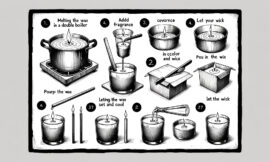Sewing your own curtains is a fantastic way to add a personal touch to your home decor. Not only does it allow for customization in terms of fabric and design, but it’s also a rewarding DIY project that can bring a sense of accomplishment. This 1000-word guide will walk you through the process of sewing curtains, perfect for any room in your house.
Why Sew Your Own Curtains?
Custom curtains can be surprisingly expensive, and finding the perfect match for your decor can be a challenge. Sewing your own curtains gives you the freedom to choose the exact fabric, pattern, and dimensions you need. It’s also a great way to repurpose fabric or to match other elements in your room seamlessly.
Materials and Tools Needed
- Fabric of your choice
- Curtain lining (optional)
- Measuring tape
- Scissors
- Sewing machine
- Thread
- Curtain rod
- Iron and ironing board
Steps for Sewing Your Own Curtains
Step 1: Measuring Your Window
Start by measuring the width and height of your window. For fullness, the curtain width should be 1.5 to 3 times the width of the window. Don’t forget to add extra length for hems and rod pockets.
Step 2: Selecting the Fabric
Choose a fabric that complements your room and serves the functional purpose of the curtains. Heavier fabrics provide more privacy and light blocking, while lighter fabrics offer a more airy and translucent look.
Step 3: Cutting the Fabric
Cut your fabric according to the measurements, ensuring that all pieces are even and straight. Remember to include allowances for hems and seams.
Step 4: Hemming
Hem the sides of your curtains by folding the edges, ironing them flat, and then sewing them in place. This gives a clean, finished look.
Step 5: Creating the Top Header
For the top of the curtain, you can create a simple rod pocket or tabs, depending on the style you prefer. A rod pocket requires folding the top over and sewing it to create a pocket for the curtain rod.
Step 6: Attaching the Lining (Optional)
If you’re using a lining, attach it to the back of the curtain fabric before sewing the top header. This adds extra weight and opacity to your curtains.
Step 7: Hanging Your Curtains
Once your curtains are sewn, iron them for a crisp finish. Hang them on your curtain rod and adjust as needed for the perfect fit.
Customization Tips
Add unique touches to your curtains, like trim, tassels, or contrasting fabric panels. You can also experiment with different styles, such as pleated, grommet, or tie-top curtains.
Safety and Care
Always be careful when using a sewing machine. Follow all safety instructions, and keep your fingers away from the needle. For maintenance, regularly clean and dust your curtains, and follow washing or dry cleaning instructions based on your fabric choice.
Conclusion
Sewing your own curtains is an enjoyable and practical project that can greatly enhance the aesthetics of your home. With a little time and effort, you can create beautiful, custom curtains that reflect your personal style and add charm to any room.



